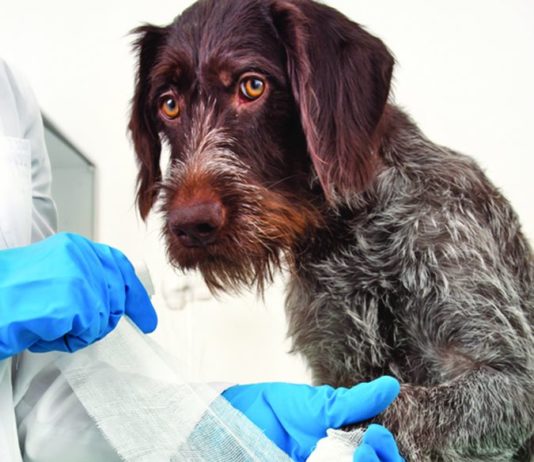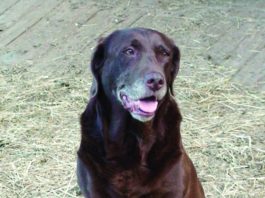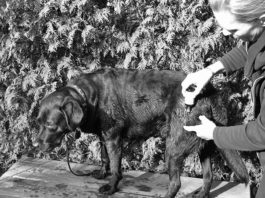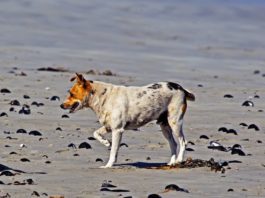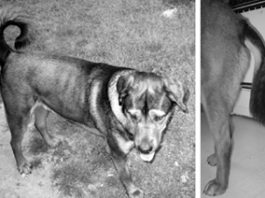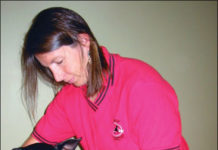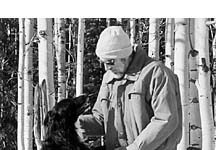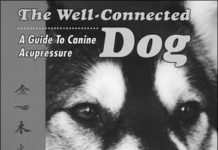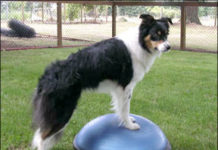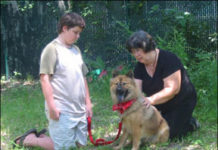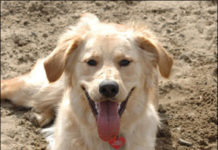Enzyme Therapy for Quicker Canine Injury Recovery
Enzymes are protein-like compounds that, in small amounts, speed the rate of biological reactions. Unstable, fragile, and easily inactivated, enzymes are produced within living cells to perform specific biochemical reactions. Enzymes exist in plants as well as animals. Without them, life as we know it would not exist. Enzymes cause seeds to sprout, flowers to blossom, plants to grow, autumn leaves to change color, and fruits to ripen.
Activity-Related Canine Injuries
He’s fearless. Reckless. Senseless? Or perhaps my Australian Cattle Dog, Cedar, is just accident-prone. Yesterday he slammed head first into a door jam during rough play with my Shepherd-mix, Willow. Today he did a nose dive off a five-foot embankment in pursuit of his favorite all-natural dog toy: a pine cone. As always, he retrieved the cone, chewed it into a slobbery clump of fibrous goo, and dropped it at my feet. On his trot back I noticed he was limping, holding his front leg off the ground.
Preventing Exercise Injury for Your Dog by Warming Up and Cooling Down
Professional human athletes never skip a proper warmup. That's because research has proven, repeatedly, that preparing your muscles for upcoming physical activity reduces the risk of physical injury. And for them, an injury could impact their wallet with down time.
Dog Injury Solutions: Calendula and St. John’s Wort
Calendula Officinalis (also known as the Marigold plant, but usually called calendula) and hypericum (also known as Saint John's Wort), are very safe, yet incredibly effective at cleaning the site of an injury and encouraging the body to heal. Homeopathic and herbal preparations of calendula and hypericum have proved invaluable in modern-day holistic dog care. In fact, it's difficult to find an herbal wound preparation that does not contain some form of one or both of these potent plants.
Treating Your Dogs’ Injuries Holistically
No matter how careful you are with your dog's everyday health needs, it's in his nature to be incautious and inquisitive. And that sometimes results in injury. Odds are, it's just a matter of when. However, your conviction to treat your dog with natural remedies is put to a real test when you are faced with an emergency. Whether your dog is severely injured in an accident or scraped and cut from a fight, your first reaction should be to remain calm, remember what you know, and think holistically. Just as you plan and prepare your dog's daily meals and training, advance planning and preparation for the unthinkable accident may help save your dog's life during the critical time between the beginning of the emergency and access to veterinary care.
The Benefits of Rehabilitation Therapy for Dogs
About a decade ago, my then-young Bouvier, Jolie, had surgery to repair a herniated disc. From reading Whole Dog Journal, I was vaguely aware that veterinary physical therapy or rehabilitation existed; these specialties were mentioned in Recovery From a Fetch Injury" in the August 1999 issue
Recovery From a ‘Fetch’ Injury
You’ve played this game thousands of times. You’ve got a few minutes, and your maniacally loyal canine companion is eager to play fetch, begging for it, ball in mouth, dropping it at your feet, barking in joyful anticipation. Then it happened. Willie slipped, tried to stop, and twisted into a ball with a yelp. He lay paralyzed from the middle of the back down, lying quietly on the frozen ground as Rogers rushed over.
Athletic Dogs and Acupressure Techniques
When spring is in the air, every dog knows it. Spring is the season when dogs want to run, play, and stretch their bodies, when their eyes brighten, and their natural zest for life flows through their veins. Spring is a time of action. There are so many canine performance sports today that require peak levels of running, twisting, turning, jumping, and pivoting. Anyone watching a canine agility trial or flyball competition can see the adrenaline pumping through every ounce of the dog's being. Adrenaline can override the senses and the animal can unknowingly hurt himself badly, especially early in the season. The risk of injury is very high when a dog is not properly conditioned. Also, dogs need to be given the opportunity to warm up before engaging in the burst of excitement and energy they experience at the moment they are released for coursing, a herding test, or on a sledding trail.
Canine Sports and Proper Canine Injury Prevention Through Conditioning
Today's explosion of canine sports has made sports medicine a veterinary specialty. But, says Carol Helfer, DVM, at Canine Peak Performance Sports Medicine & Physical Rehabilitation Center in Portland, Oregon, competing dogs are prone to injury not because their sports are inherently dangerous but because canine athletes seldom receive the conditioning training that keeps them strong, balanced, and coordinated. The whole notion of injury prevention through proper conditioning is one that is just beginning to gather attention,h explains Dr. Helfer. What I love about this work is that a few simple exercises can dramatically change a dog's quality of life. In athletic dogs, the proof is in their continued good health, enhanced performance, and absence of injuries. Elderly and sedentary dogs benefit, too, and they quickly show increased range of motion and a renewed enthusiasm for activities."
How to Prevent Injury to Your Exuberantly Active Dog
the dog's diagonal pairs of legs move together at the trot. Take note if your dog suddenly starts pacing; it can indicate that he's trying to find a gait that reduces muscle or joint pain. Be aware
Frequently Used Canine Healing Methods for Injured Dogs
We call it the spark of life for good reason. From birth to death, all living creatures generate and transmit energy. Entire healing therapies, some of them thousands of years old, have been built around energy. Once dismissed by Western science as impossible or ridiculous – and still viewed with suspicion by conventional physicians and veterinarians – energy medicine is slowly gaining acceptance in the United States. Several energy therapies are taught in American universities or are used by a growing number of healthcare practitioners. Can energy therapies help your dog? The descriptions and resources provided here may help you decide.
Dog Exercises and Injury Prevention
Strained muscles, pulled ligaments, sprains, and bruises . . . these are common canine injuries in the spring, when the weather invites us all outside and even seems to encourage our dogs to overdo it. Enthusiastic, rigorous exercise that follows several months of relative inactivity is a prescription for injury.


